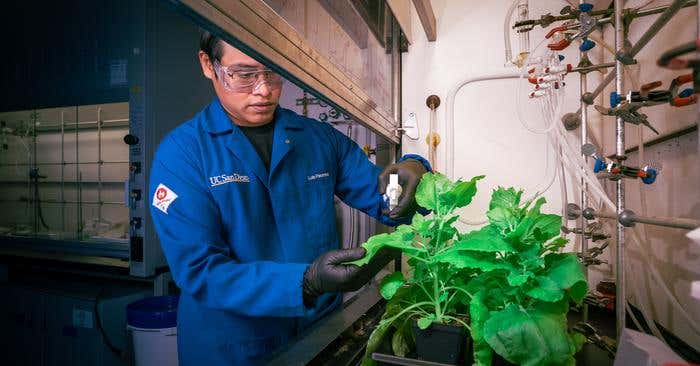Invisible face mask reduces airborne virus transmission
The device creates filtered airflow in front of the user’s face, reducing the concentration of viruses in the air and the risk of infection

Amidst the COVID-19 pandemic, respiratory masks played a crucial role in combatting virus transmission. However, they often posed discomfort and communication barriers.
Ricardo Vinuesa, from KTH Royal Institute of Technology, leads a study presenting an innovative solution potentially revolutionizing preventive measures against airborne infections.
Picture a cap equipped with a built-in fan blowing air in front of your face. This isn't a joke but a novel innovation. Through advanced simulations of virus particle spread, an international team devised a simple, cost-effective solution significantly reducing airborne virus transmission risk.
More effective than traditional face masks, this concept redirects airflow away from the user, surpassing mask efficacy.
"Face masks and a distance of 2 meters are helpful, but actively directing virus-laden air downwards is even better. Our solution not only outperforms masks but also fosters comfortable interaction," Vinuesa elaborates.
With partial face coverage, the device enhances social interaction, particularly vital in healthcare settings like operating theaters, where clear, swift communication is paramount.
Related Stories:
Its applications extend beyond virus containment, serving diverse environments like offices, schools, and public transport, safeguarding everyone from surgeons to individuals routinely exposed to dust and micro-particles.
This innovation stems from extensive international collaboration. "The idea emerged through discussions with my engineering colleague Ramon Navarro, evolving with fluid mechanics and numerical simulation experts, refining its design," Vinuesa shares.
Leveraging direct numerical simulation, researchers assessed the tool's efficacy under various conditions—airflow speed and direction, environmental states, and geometric factors.
Does the airflow impact surrounding areas?
"No adverse effects on others in the room, even if they're not using the device."
Are there any remaining challenges?
"The manufacturing challenge lies in balancing battery and fan weight with their effectiveness according to our technical parameters."
The research team now conducts wind tunnel tests to evaluate the tool's real-world performance. The next phase involves attracting potential investors. "We've developed prototypes and conducted tests. Currently, we seek investors for large-scale production."
For more science news stories check out our New Innovations section at The Brighter Side of News.
Note: Materials provided above by the The Brighter Side of News. Content may be edited for style and length.
Like these kind of feel good stories? Get the Brighter Side of News' newsletter.



